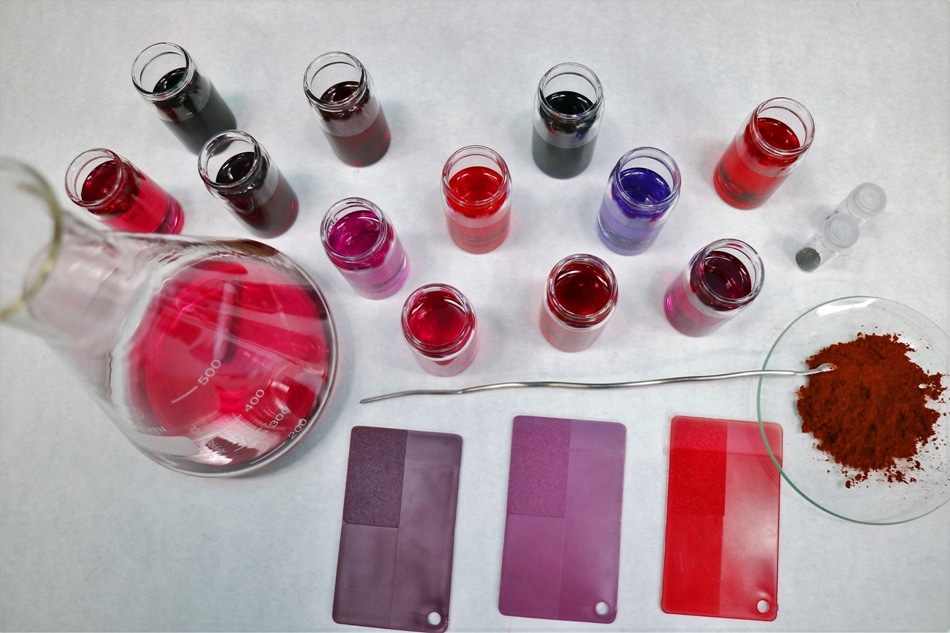Apr 16 2018
Fourteen new coloring agents have been synthesized with solvatochromic properties, i.e. their color changes according to the type of plastic they are applied on or the substance in which they dissolve. This feat was achieved at the Universidad de Alicante’s (UA) Institute of Organic Synthesis (ISO). This fundamental and applied research project forms a part of the PhD theses carried out by María José Albaladejo and María José González and directed by professor of Organic Chemistry and ISO director Francisco Alonso.
 Family of coloring agents developed by the UA Institute of Organic Synthesis (ISO). (Image credit: UA Audiovisual Studio)
Family of coloring agents developed by the UA Institute of Organic Synthesis (ISO). (Image credit: UA Audiovisual Studio)
The method involved is intriguing from the standpoint of fundamental research, as only one starting substance is used, indolizine, which subsequently self-transforms into a colorant. According to Francisco Alonso, “the original molecular structure remains the same, with only a hydrogen atom being replaced by a fragment from another identical indolizine molecule, so the transformation process as a whole can be described as a ‘transplant between molecular clones’, which is highly unusual in organic synthesis.”
Oddly enough, these colourants exhibit a single molecular structure when they are solid, but two in solution (rotamers). An even more surprising fact is that the solvatochromic behaviour has been displayed at very low concentrations also in plastic materials. This means that different plastics which do not absorb visible light and are perceived as colourless or whitish can switch to a different colour by means of the same colouring agent.
Francisco Alonso
The process of making the coloring agents is environmentally friendly, as no metals or harmful solvents are present, and has demonstrated to be efficient on a multigram scale. In this sense, their coloring power is really high. Plastic plaques of numerous materials were dyed during laboratory tests with only 0.05-0.2% of a coloring agent.
Since 2014, the ISO has been working to synthesize indolizine-derived dyes with probable applications in thermography and photothermography, optical filters, laser recording and reading devices, electrochromic devices, and photoelectric converters for solar cells. After a number of years of hard work, the UA researchers have succeeded in designing up to 14 different colorants for colorless plastics.
The research details have been published recently in Green Chemistry, a journal published by The Royal Society of Chemistry. This Valencia Region Government-funded project has been patented. Alicante-based plastics companies IQAP Masterbach Group S.L. and Colortec Química S.L. and ISO PhD researcher Diana Almasi, in charge of process scaling, were also part of this venture.